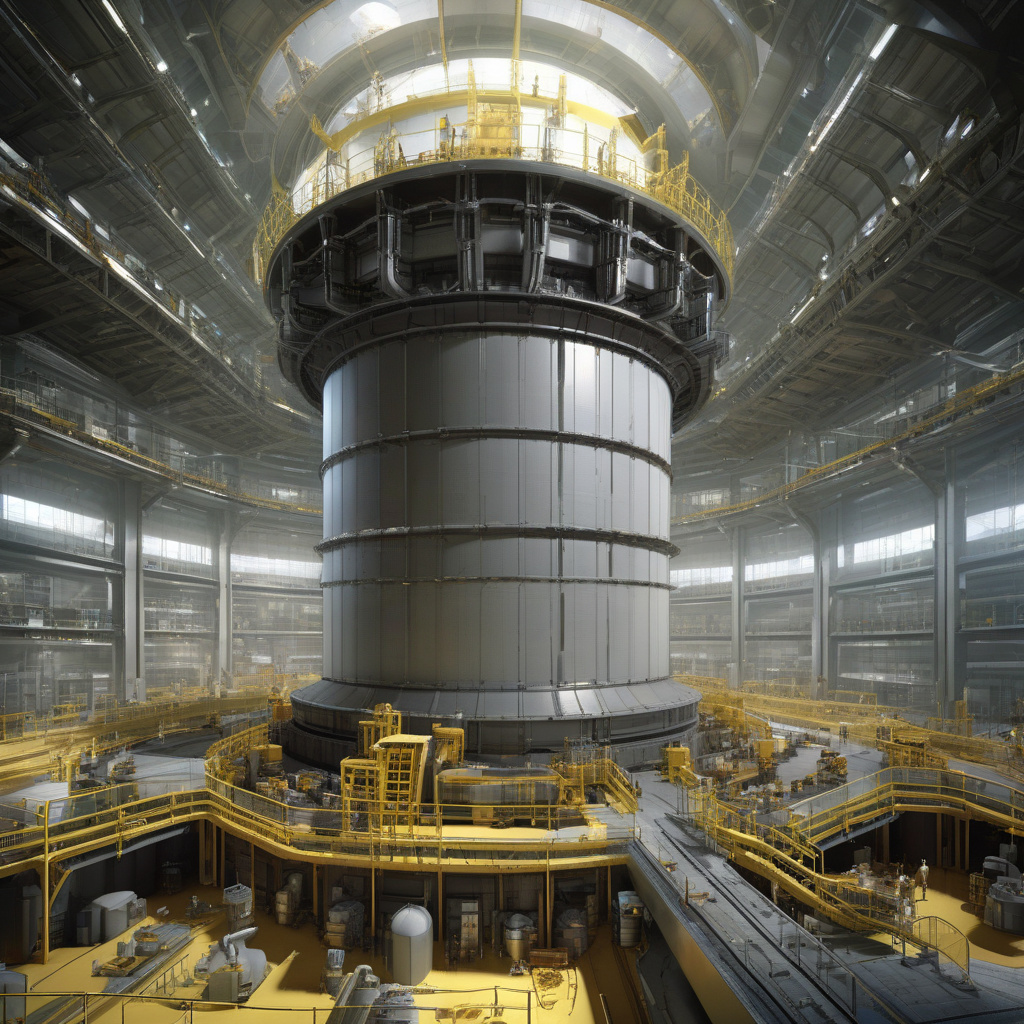World’s Largest Nuclear Reactor Gets 3,000-Ton Magnet Core for 10x Energy Output
Today, the International Thermonuclear Experimental Reactor (ITER) announced the completion of all components for its groundbreaking nuclear fusion project. One of the most significant milestones achieved is the installation of a massive 3,000-ton magnet core, which is set to revolutionize the energy output of the world’s largest nuclear reactor.
The ITER project, located in southern France, aims to demonstrate the feasibility of nuclear fusion as a sustainable and clean energy source. Unlike traditional nuclear fission reactors that split atoms to release energy, nuclear fusion reactors replicate the process that powers the sun and stars by fusing atoms together at incredibly high temperatures.
The key to achieving controlled nuclear fusion lies in harnessing the power of magnetic fields to confine and control the superheated plasma within the reactor. The newly installed 3,000-ton magnet core, known as the “heart” of the ITER device, is a crucial component in creating the magnetic confinement necessary for sustained fusion reactions.
By increasing the size and power of the magnet core, ITER aims to boost the energy output of the reactor by a factor of ten. This significant enhancement paves the way for achieving the ultimate goal of the project: producing more energy from fusion reactions than is needed to sustain the process, known as “ignition.”
The implications of this technological advancement are monumental. If successful, ITER’s nuclear fusion reactor could provide a virtually limitless source of clean energy, with minimal environmental impact and no long-lived radioactive waste. This breakthrough has the potential to revolutionize the global energy landscape, offering a sustainable solution to the growing demand for clean power.
Moreover, the ITER project represents a remarkable collaboration of 35 countries, including the European Union, the United States, China, Russia, and India, among others. This international partnership demonstrates the shared commitment to advancing scientific research and addressing the challenges of climate change through innovative technology.
In addition to the installation of the magnet core, ITER has made significant progress in assembling other critical components of the reactor, such as the giant cryostat that will house the fusion reactions and the powerful heating systems needed to reach the extreme temperatures required for fusion.
As the ITER project enters its next phase of testing and commissioning, the world eagerly anticipates the results of this ambitious endeavor. The successful operation of the world’s largest nuclear reactor could mark a turning point in the quest for sustainable energy solutions and pave the way for a cleaner, greener future for generations to come.
In conclusion, the installation of the 3,000-ton magnet core in the ITER nuclear fusion reactor represents a major step forward in achieving sustainable and clean energy through nuclear fusion technology. With the potential to increase energy output tenfold, this milestone brings us closer to realizing the dream of limitless clean energy and underscores the power of international cooperation in tackling global challenges.
ITER, nuclear fusion, sustainable energy, clean technology, global collaboration












